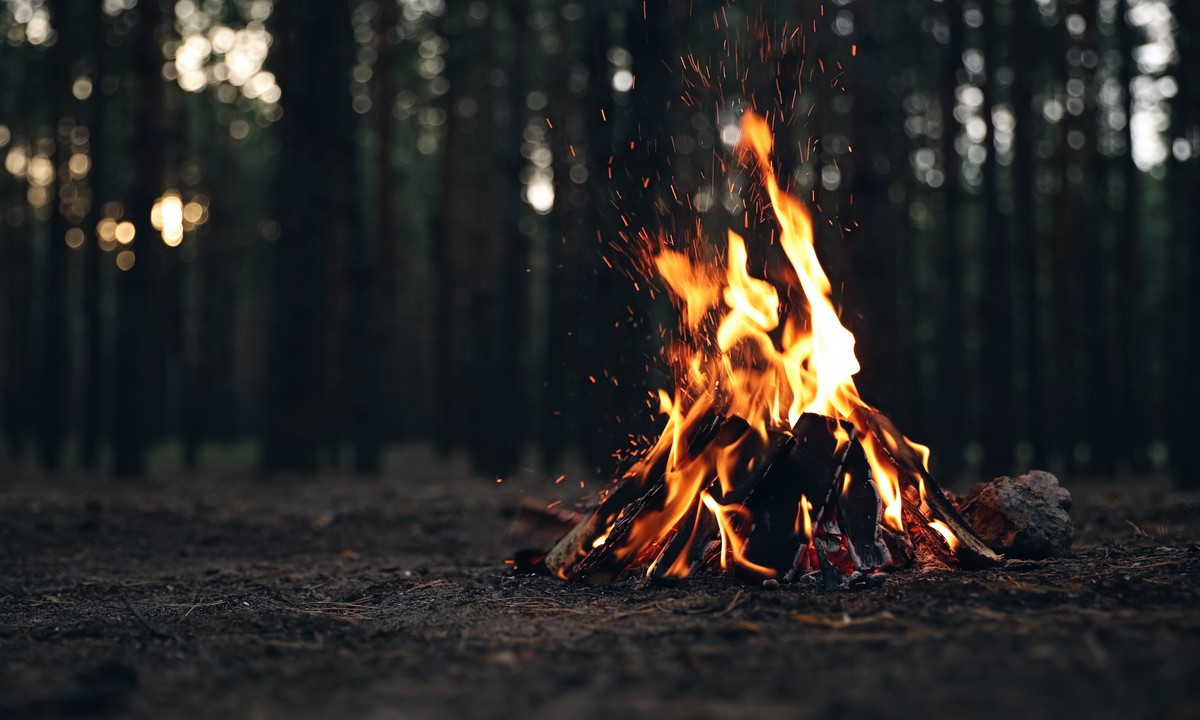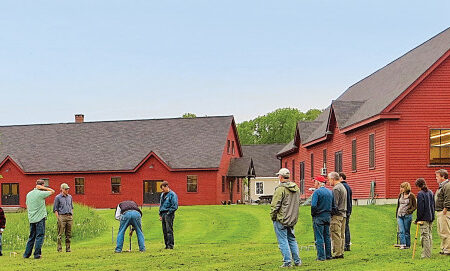This content was originally published on OldHouseOnline.com and has been republished here as part of a merger between our two businesses. All copy is presented here as it originally appeared there.

Nothing quite beats an outdoor campfire. Whether you’re toasting marshmallows or just giving yourself a break from your busy life for a few hours, there’s something about a campfire that makes it especially enjoyable. But before you can enjoy it, you need to learn how to properly build a campfire using a fire starter. In this post, we’ll walk you through the step-by-step process of building a campfire using a fire starter and other necessary items.
We’ll also explain the importance of preparing the area beforehand, choosing the right kind of fire starter, properly stacking the wood, and maintaining the fire throughout your campfire. We’ll make sure that you not only have a quality campfire to enjoy but that you and your surroundings stay safe during the process.
Gather the Materials
Before you start your campfire, you’ll need to have the right materials. Ensure you have the following items.
Fire starters
These can come in many forms. Fire starters can be as simple as a crumpled newspaper or as complex as special fire logs. It’s best to use a fire starter that will burn quickly and easily, ensuring your fire starts without any issues.
Matches
Having an alternate way of starting your fire can be helpful if the fire starter you choose doesn’t work or gets wet.
Firewood
Make sure to gather some dry, seasoned firewood before beginning your campfire. Wet or green wood won’t burn well and could potentially create more smoke than needed.
Lighter
This can be used if you don’t have any matches or if it is windy outside, as a lighter may offer better protection from wind gusts.
Kindling
This includes small twigs and branches that you can use to help get the fire going before adding larger pieces of wood.
Tinder
Small pieces of material used to help ignite the kindling, such as paper, cotton balls soaked in petroleum jelly, or even dryer lint, can do the job.
Prepare the Fire Starter
Once you have gathered all of your materials, it’s time to prepare the fire starter. Ensure the fire starter is dry and has plenty of room for air to circulate. This will make it easier to light and will help it burn efficiently when lit with matches, lighters, or other forms of kindling.
Prepare Your Area
Once your fire starter is ready, carefully choose a safe place for your campfire where there are no flammable materials nearby. Select a flat surface that is on level ground away from tree limbs and brush. Arrange some kindling around the fire starter in a teepee-style structure, which will allow air to circulate easily and also provide quick ignition when you light the fire starter with something like a match or lighter. Once this is done, add some small pieces of firewood to help keep the flame going once it has been ignited with the fire starter and kindling.
Start the Fire
Once everything is prepared and in place, it’s time to light up your campfire. Place the lit matches or lit lighter inside your teepee-style structure with the kindling surrounding it. Once ignited, you can add more kindling. You can add additional fuel sources such as cotton balls soaked in petroleum jelly or even dryer lint.
Keep the Fire Going
Once your campfire has started with a good blaze going, all that’s left is maintaining it so it doesn’t get out of control. You can add larger pieces of wood when needed while also monitoring the size of your campfire so that it doesn’t become too large or too small. Be sure not to leave any burning embers so that they don’t reignite when exposed to oxygen.
Extinguish the Fire
When finished with your campfire, allow it to burn out naturally before pouring water over it. When done correctly using a reliable fire starter and proper materials like tinder and kindling, building a safe and dependable campfire is easy.
Conclusion
Using a fire starter to build a campfire is an empowering and enjoyable experience. You can easily learn how to build a campfire using this guide, as long as you make safety a priority and ensure you have the right materials and equipment. With the right preparation and attention, you can enjoy your campfire without any hazardous surprises.







